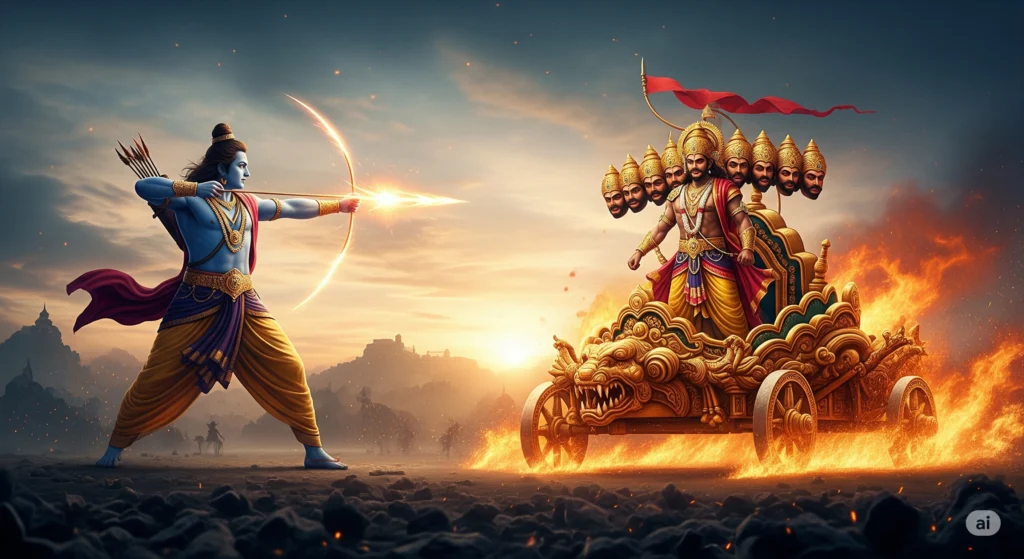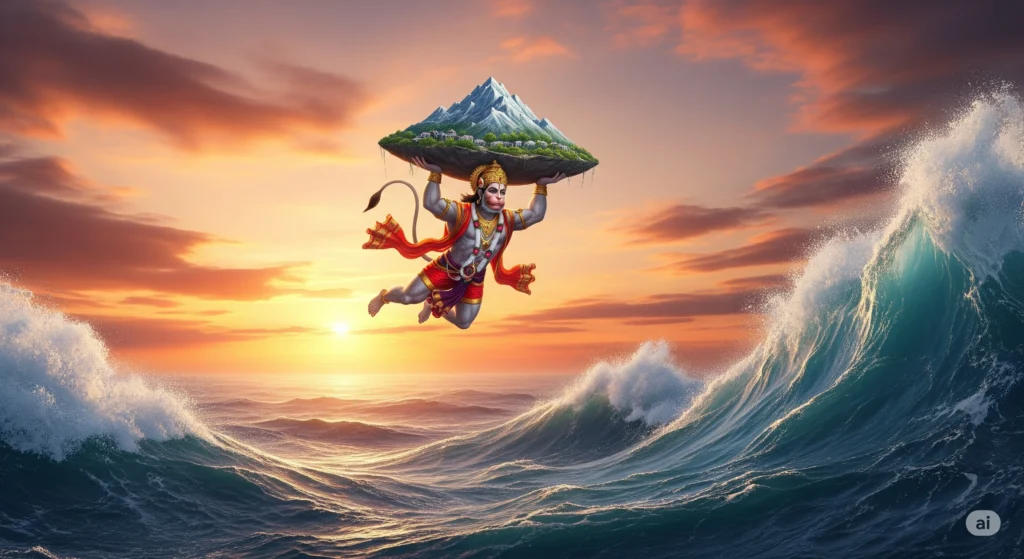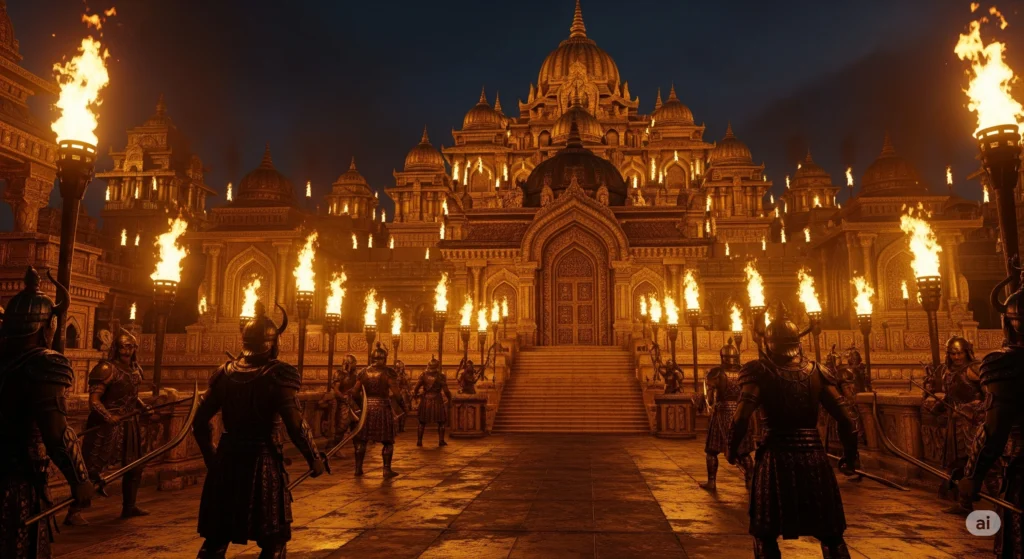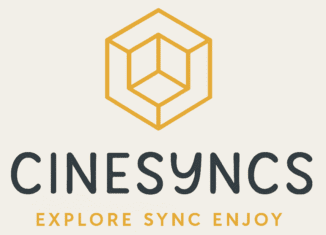AI in Ramayana Movie – Setting the Record Straight
The upcoming Ramayana movie is directed by Nitesh Tiwari (of Dangal and Chhichhore fame) and produced at scale by Namit Malhotra’s Prime Focus Studios in collaboration with partners including Yash’s Monster Mind Creations. Because there’s so much online buzz, rumors and AI fan-edits get mixed up with real production details. This post gives you verified and plagiarism-safe insights into how technology—especially AI in Ramayana movie workflows—is actually being leveraged, where it’s still speculative, and what’s purely creative myth.

Quick Verified Credits Snapshot
- Director: Nitesh Tiwari.
- Producer / Global Showrunner: Namit Malhotra (Prime Focus Studios; also Global CEO of DNEG). Co-producing partners include Yash’s Monster Mind Creations.
- Principal Cast (current public reporting): Ranbir Kapoor (Rama), Yash (Ravana), Sai Pallavi (Sita), Sunny Deol (Hanuman), Ravie Dubey (Lakshman), Indira Krishnan (Kaushalya), and others emerging through casting updates.
- Music Collaboration: A.R. Rahman with Hans Zimmer on the score—major global crossover.
- Format: Planned two-part release: Part I targeting Diwali 2026; Part II targeting Diwali 2027 (public timelines; subject to change).
These confirmed production foundations matter when we analyze the role of AI in Ramayana movie pipelines.
1. Multilingual Performance Localization (Confirmed Core Use Case)
The most clearly confirmed deployment of AI in Ramayana movie is in language localization. Rather than relying on traditional dubbing or on-screen subtitles, the production is pursuing technology that can recreate lip-synced, performance-faithful dialogue in multiple languages—so a viewer in the U.S. can experience English-delivered performances that visually match the actors’ mouths, while a viewer in Spain or Japan can experience native-language alignment that still feels like a single authoritative cut.
Why it’s a big deal: Traditional dubbing breaks immersion; subtitles reduce eye focus; poorly synced lips hurt credibility. By using AI-assisted facial mapping, phoneme remapping, and neural speech synthesis tied to character performance data, AI in Ramayana movie could make each localized version feel natively performed—critical for global box office and streaming longevity.
2. High-Resolution Volumetric Scanning & Data Capture (Confirmed Tech; AI-Assisted Inference)
Actor Indira Krishnan described being scanned inside a multi-camera VFX capture rig (~86 cameras) similar to one used on Interstellar. Such dense capture arrays generate huge datasets: full-body geometry, costume alignment, micro-expression references, and lighting references from many angles. While the production has not publicly detailed the back-end software stack, modern volumetric workflows almost always lean on AI-assisted reconstruction, depth interpolation, and mesh clean‑up automation to speed asset creation.
How this ties to AI in Ramayana movie:
- Multi-angle photogrammetry data feeds machine-learning reconstruction models that build clean digital doubles faster.
- AI upscalers improve texture fidelity (skin, fabric, ornament work central to Ramayana iconography).
- Automated rigging suggestions reduce manual time when fitting characters across age variants (younger/older look passes hinted at in scan usage).
3. Performance Preservation & Age Variations (Industry-Likely)

Because the Ramayana spans years—exile, war, coronation—age progression or de-aging moments may appear. With precision scan data already captured, production Ramayana VFX teams can deploy AI-driven facial tracking, morph target blending, and skin-aging simulation tools to create believable transitions while preserving actor likeness. We do not yet have a scene-by-scene confirmation, so frame this as an industry-likely application of AI in Ramayana movie rather than a locked fact.
4. Action Sequences: Human-Choreographed, AI-Supported Pipeline (Confirmed Human-Led)
Online chatter mistakenly claimed that battle scenes—archery duels, aerial Vanara combat, Lanka war formations—were AI-choreographed. That is not confirmed. In fact, large-scale combat design on this project is being led by top international stunt/action specialists (including names associated with Mad Max and Planet of the Apes franchises). These experts plan, rehearse, and capture action physically.
So where does AI in Ramayana movie fit? Likely in support layers:
- Clean-up of mocap noise when fusing actor & stunt data.
- Crowd replication using AI-assisted agent systems (industry tools that auto‑vary movement cycles for large armies).
- Predictive physics assists animators blocking CG creature motion after stunt plates.
Also Read: Ramayana Movie Namit Malhotra: Record-Shattering Global Epic (Diwali 2026 Preview)
5. Music Collaboration & Adaptive Mixing (Confirmed Collab; Tech-Assisted Post)
The film unites A.R. Rahman with Hans Zimmer—a huge crossover that signals international intent. While compositions remain human-crafted, large epics increasingly rely on AI-assisted audio mastering: dialog/noise isolation, adaptive stems for immersive formats (IMAX, Atmos, spatial streaming), and predictive loudness leveling across language versions.
6. Asset Scaling for Global Formats (Industry-Likely)
Because Ramayana targets theatrical IMAX plus downstream streaming platforms, asset scaling matters. AI-enabled resolution upscaling, motion interpolation safety checks, and HDR tone-mapping optimization can reduce repeated manual passes when conforming to different delivery specs. For mythological epics with dense gold, skin tones, forest greens, and fire FX, calibrated scaling prevents color clipping. This is an inferred but common workflow worth educating readers about under the umbrella of AI in Ramayana movie.

7. Data-Driven Global Marketing (Speculative / Trend-Aligned)
Producers pushing a $multi‑hundred‑million mythological epic worldwide rarely fly blind. While no official breakdown has been published, you can responsibly discuss how AI-driven audience analytics typically guide trailer cuts, poster variants, and territory‑specific messaging. Because global localization is a confirmed priority, marketing teams almost certainly monitor social signals across language clusters. Label this clearly as industry-standard practice likely to accompany a film using AI localization—and tie it back to the focus keyword: AI in Ramayana movie extends beyond the screen into campaign intelligence.
Note: Please remember that this article is just for illustrative purposes only. I am not saying that whole movie will be made using AI. I respect artist’s hard work.
Also Read: Bollywood Piracy Scandals – 5 Films That Faced Huge Losses
8. FAQ: AI in Ramayana Movie
Q1. Is AI actually being used in the Ramayana movie?
Yes—most clearly in multilingual performance localization so audiences worldwide can experience native-language lip sync.
Q2. Is AI choreographing the battles in Ramayana?
No confirmed evidence. Large-scale action is designed by human stunt and action specialists; AI tools may support crowd or mocap cleanup.
Q3. What’s with the 86-camera VFX rig?
Actors were scanned in a multi-camera array similar to rigs used on major Hollywood films; such data typically feeds AI-assisted digital double workflows.
Q4. Will the AI lip-sync tech affect the original performances?
The intent is to preserve performance fidelity while adapting mouth movements and dialog to each language track.
Q5. Does AI replace VFX artists?
No. Artists still drive look, style, mythic scale. AI in Ramayana movie accelerates repetitive or data-heavy tasks.
Conclusion: Tradition at Scale, Technology With Purpose
The promise of AI in Ramayana movie isn’t about replacing storytellers—it’s about honoring one of India’s most sacred epics while ensuring it reaches every corner of the world without losing emotional truth. Under Nitesh Tiwari’s direction and Namit Malhotra’s global production infrastructure, the film blends artistry, volumetric capture, language intelligence, and top-tier VFX craft. When audiences in Tokyo, Madrid, Nairobi, and New York can all watch Rama speak in their own language—yet still feel the performance was made for them—that’s where AI in Ramayana movie becomes historic.
Get ready: Part I aims for Diwali 2026, and the conversation around technology, culture, and cinematic scale will only grow louder as we approach release

Pingback: The Family Man Season 3 Exciting Announcement: Manoj Bajpayee Returns on 21 November 2025 - CineSyncs